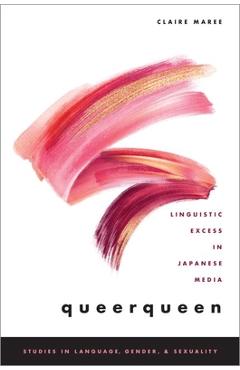Queerqueen: Linguistic Excess in Japanese Media - Claire Maree

Detalii Queerqueen: Linguistic Excess in Japanese
libris.ro
333.25 Lei
370.28 Lei
Language Arts & Disciplines
Claire Maree
Queerqueen: Linguistic Excess in Japanese - Disponibil la libris.ro
Pe YEO găsești Queerqueen: Linguistic Excess in Japanese de la Claire Maree, în categoria Language Arts & Disciplines.
Indiferent de nevoile tale, Queerqueen: Linguistic Excess in Japanese Media - Claire Maree din categoria Language Arts & Disciplines îți poate aduce un echilibru perfect între calitate și preț, cu avantaje practice și moderne.
Preț: 333.25 Lei
Caracteristicile produsului Queerqueen: Linguistic Excess in Japanese
- Brand: Claire Maree
- Categoria: Language Arts & Disciplines
- Magazin: libris.ro
- Ultima actualizare: 28-10-2025 01:22:05
Comandă Queerqueen: Linguistic Excess in Japanese Online, Simplu și Rapid
Prin intermediul platformei YEO, poți comanda Queerqueen: Linguistic Excess in Japanese de la libris.ro rapid și în siguranță. Bucură-te de o experiență de cumpărături online optimizată și descoperă cele mai bune oferte actualizate constant.
Descriere magazin:
From the twins Osugi and Peeco to longstanding icon Miwa Akihiro, Claire Maree traces the figure of the Japanese queerqueen, showing how a diversity of gender identifications, sexual orientations, and discursive styles are commodified and packaged together to form this character. Representations of gay men\'s speech have changed in tandem with gender norms, increasingly crossing over into popular media via the body of the authentic gay male up to and including the current LGBT boom in Japan. In this context, queerqueen demonstrates how commercial practices of recording, transcribing, and editing spoken interactions and use of on-screen text encode queerqueen speech as inherently excessive and in need of containment. Tackling questions of authenticity, self-censorship, and the restrictions of heteronormativity within this perception of queer excess, Maree shows how queerqueen styles reproduce stereotypes of gender, sexuality, and desire that are essential to the business of mainstream entertainment.

Produse asemănătoare

Queerqueen: Linguistic Excess in Japanese Media - Claire Maree
![]() libris.ro
libris.ro
Actualizat in 28/10/2025
333.25 Lei

Queerqueen: Linguistic Excess in Japanese Media, Paperback/Claire Maree
![]() elefant.ro
elefant.ro
Actualizat in 20/10/2025
274.99 Lei
Produse marca Claire Maree

Queerqueen: Linguistic Excess in Japanese Media - Claire Maree
![]() libris.ro
libris.ro
Actualizat in 28/10/2025
333.25 Lei